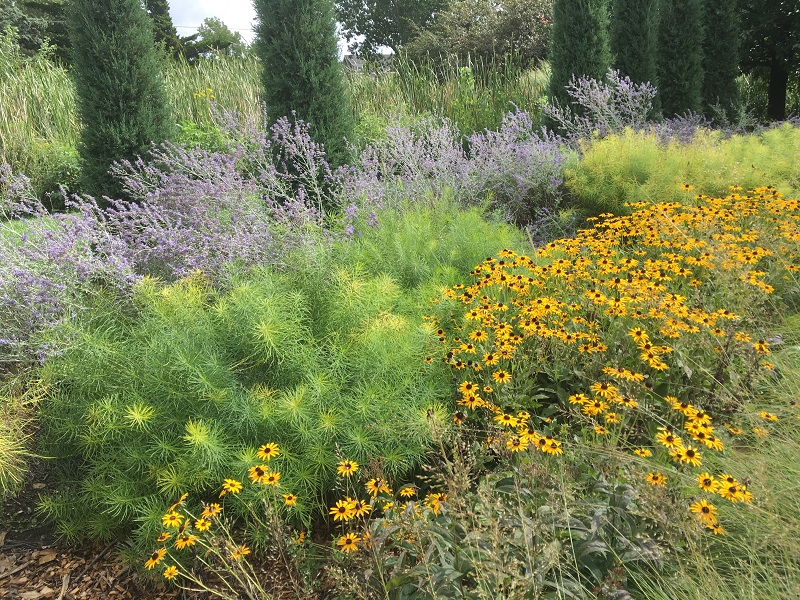The more you understand your garden, the easier it will be to choose the right plants for your site. We all have plant preferences but not all of your plant preferences will grow in your garden. Here are a few more aspects to consider as you analyze your landscape.
Soil Type
Here in south central Kansas, our soils are typically alkaline, which is good for growing most prairie plants. Soils can be pH neutral with a value of 7.0, or anything below that is classed as acid, and anything above, alkaline. To determine your pH, a simple soil test can be done by yourself from kits at most garden centers or through the extension service.
Other soil considerations are consistency and texture. At the Arboretum, we deal mostly with clay soils. This soil type compacts easily and drains poorly. You must find plants with root systems that can penetrate through the dense structure of clay, i.e., big bluestem, asters, and indigos. Other soil types are sandy (dries out quickly, low nutrient holding capacity, low organic matter and loose in your hand), Silty (mixture of a sand and clay, easily compacted), Chalky (stoney, exposed subsoil after construction, good drainage) and Loamy (high in organic matter, holds moisture and nutrients).
If you have been working in your garden for any length of time, you have a good idea of what type of soil you have. You can add some compost to your soil if it is really terrible, but typically, you can find plants that will grow in your soil conditions. For example, there are plants that appreciate the consistent drainage of sandy soils especially during the winter months.
If your soil is alkaline, you will struggle growing rhododendrons and azaleas that need acidic soil. Try to gather as much information about your soil and then find plants that grow in it. Finding the right plant for the right place will make you garden smarter not harder.
Think of Garden Aspect
Once you have defined the area you want to landscape, you need to understand aspect. Garden aspect simply means which way your garden is facing. If it north facing, typically shadowed by your house, it needs plants that can grow in shade or partial shade. If it is south facing, then choose plants for all day sun. If it east facing, then choose plants that need six hours of sunlight, but are protected from the hottest sunlight hours. If your garden is west facing then choose plants that can endure the hottest sunlight hours.

Obviously, trees, structures, and house orientation play a role in garden aspect. The key is to observe your garden at different times throughout the year. This will help you understand completely where the sunlight is coming from and how intense it can be.
One other thing to consider is microclimates within your garden. There may be small areas that behave totally different than other areas ten to fifteen feet away. One example would be a protected area along a fence or under a tree the shields that site from hot west sunlight and drying winds. Or, a low area in your yard that stays consistently moist is another example. These areas might allow you the opportunity to try a few different plants that would not otherwise grow in your garden.
Next Week: Site Analysis Part 3

